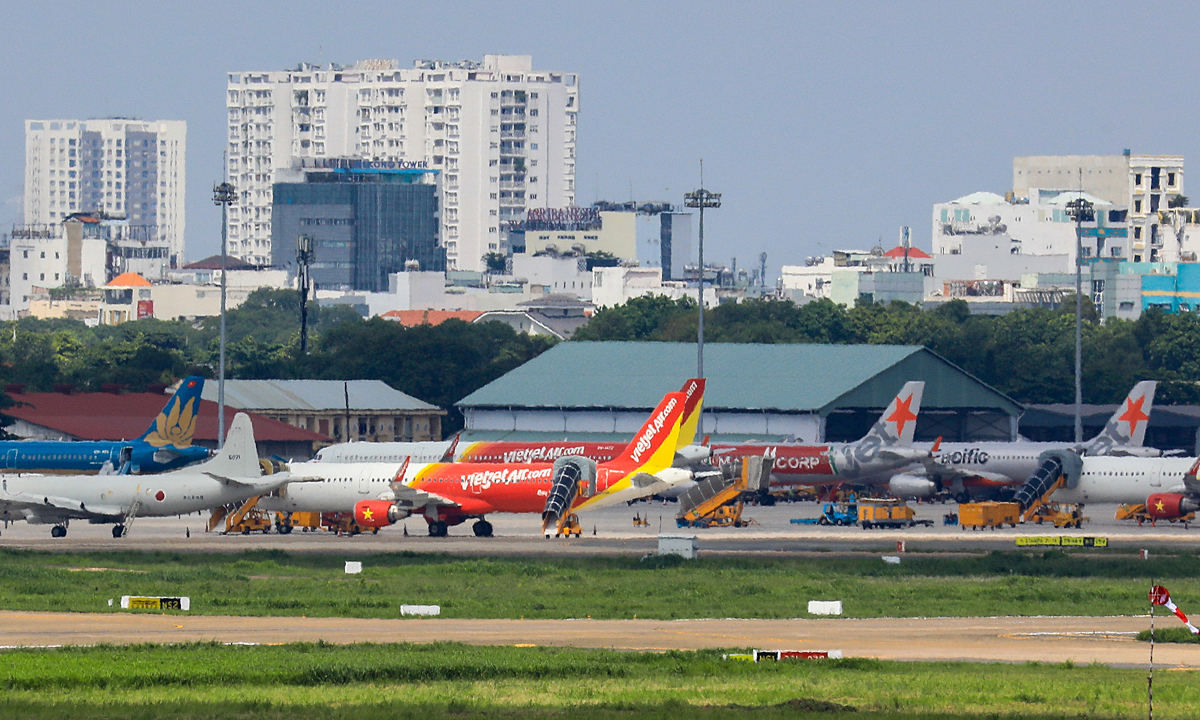Loosen “knot” to save tourism
The visa regulation is frequently viewed as a significant barrier for Vietnam's tourism sector, particularly given the urgent position in which we are currently finding ourselves.

All aviation companies in Vietnam are struggling with losses and debts.
>> Better training needed to address tourism manpower shortages
No choice except to advance
The need of bringing in foreign tourists to Vietnam was stressed by Dr. Luong Hoai Nam, a member of the Tourism Advisory Council. He emphasized that prior to the pandemic, Thailand attracted twice as many foreign visitors as Vietnam. Vietnam has enormous potential and advantages for tourism, including a rich natural, cultural, and historical legacy; but, following the epidemic, the number of foreign visitors fell to barely one-third of Thailand's. In order to avoid a disastrous situation for Vietnam's aviation and tourism industries, it is imperative to make adjustments this year. Thousands of tourism, hotel, attractions, and entertainment businesses are suffering heavy losses and cutting labor due to the absence of international tourists.
Similarly, all aviation companies in Vietnam are struggling with losses and debts. Vietnam Airlines incurred a loss of more than 34 trillion dong, negative equity of more than 10,000 billion dong, and the stock code is in danger of being delisted. Subsidiary Pacific Airlines also accumulated losses of more than VND 10,000 billion, three times more than equity. Bamboo Airways, which recently started its operation, announced an accumulated loss of more than VND 16,000 billion due to the Covid-19 pandemic. Even Vietjet Air, which announced profits for more than a decade, lost VND 2,170 billion in 2022.
According to Dr. Nam, rescuing international tourism is not only about saving tourism businesses, airlines, and primary and secondary resort real estate investors, but it also brings many opportunities to sell goods and increase income for poor hawkers. He said, "Tourism is no longer the way to go back. Every international visitor to Sa Pa increases the chance for a peddler child to sell more goods, and it also provides opportunities for the poor to escape poverty."
>> Large room for Vietnam tourism
Removing the “knot” for visa
Mr. Do Xuan Quang, Vice President of Vietjet Air, believes that the inability to welcome international guests back is a major bottleneck for the recovery of Vietnam's tourism industry. To make it more convenient for international tourists to visit Vietnam, the country needs to implement more liberal visa policies, such as issuing electronic visas to more countries, including Chinese tourists using electronic passports. Vietnam should also move towards visa-free entry for visitors from Australia and the Schengen bloc.
In addition to expanding the visa exemption list, Vietnam should focus on developing potential forms of tourism, such as health tourism, shopping tourism, and entertainment tourism. To start, improving the visitor experience through the enhancement of local tourism infrastructure systems is critical.
In 2019, Vietnam welcomed 8 million international visitors, and China was one of the major markets for Vietnam's tourism, with Vietnam Airlines organizing 72 routes from five locations in Vietnam to 48 destinations in China.
According to Mr. Bui Minh Dang, Deputy Head of the Passenger Transport Department at the Civil Aviation Authority of Vietnam, the department carried out renovation and investment projects in airports during the Covid epidemic, especially at Tan Son Nhat and Noi Bai airports. These projects are essential to enable Vietnam to welcome more international tourists, as the number of 8 million international visitors in 2023 is quite modest.
Many experts believe that unique products and quality services are essential for tourists to decide to return to Vietnam. However, removing the "visa knot" is the first step in bringing tourists back to Vietnam. An open policy will serve as a "red carpet" to attract international tourists, contributing to restoring Vietnam's tourism and aviation industry to its inherent position in the region and the world.








